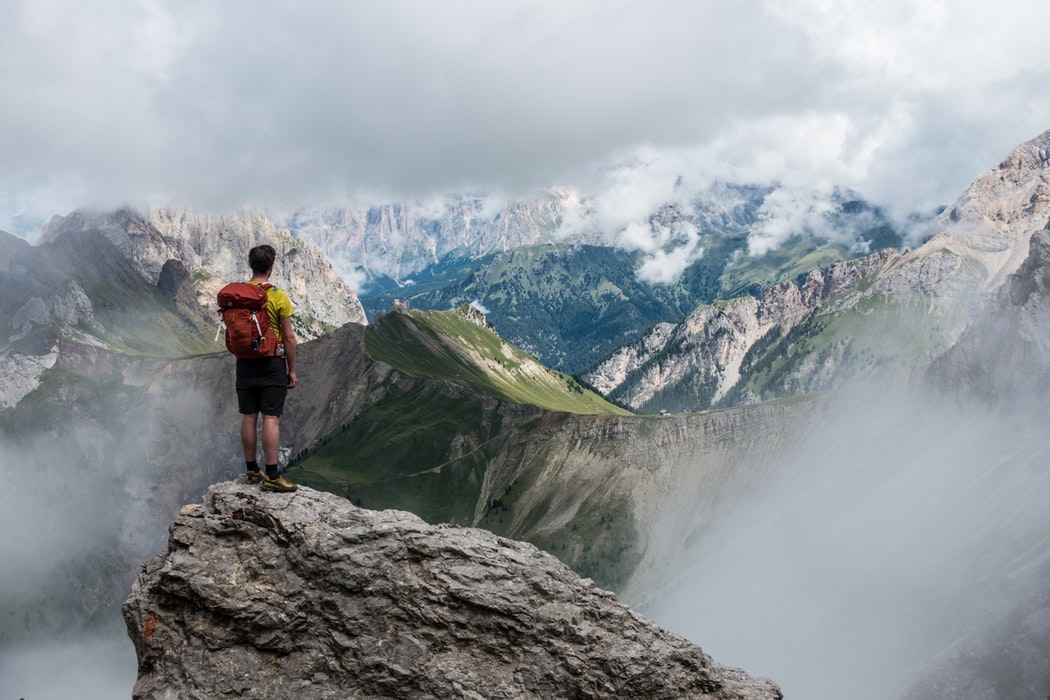The summer is here and the time is perfect to get out of the house and explore nature. Hiking is a great way to stay active and boost your mood, but it can prove challenging for someone who is doing it for the first time. All experienced hikers will tell you that it can cause health problems, and especially knee issues if you don’t take safety measures. If you have practiced outdoor sports before, you know that pains and aches can ruin your experience. But, hiking doesn’t have to be an activity that ruins your health, as long as you do it the right way it can improve it.
Here are some recommendations for the beginners who want to hike the trails this summer. Enjoy nature and stay healthy and safe.
Table of Contents
Hiking gear essentials
The best way to protect yourself when hiking is to wear the right apparel. No matter the temperatures, you should always wear the following items.
Boots
As a beginner hiker, you may have the misconception that a pair of sports shoes will do just fine. Well, tennis shoes, or other type of shoes will not protect your feet or prevent accidents. Investing in a high-quality pair of boots is the right decision, it will provide traction when you hike in a slippery or wet area. They are created to keep you safe and stop you from slipping, no matter the ground.
You may even want to consider steel toe hiking boots to give your feet extra protection. These types of boots are a relatively new development aimed to be very lightweight, even with a steel toe. A minimalist style work boot is comfortable, flexible, fitted, extremely light and provides the foot protection you need, with a maximum freedom of movement. Minimalistic shoes have less padding than the average hiking boot and might need some getting used to. People who have made the transition to minimalist working and hiking boots swear they are extremely comfortable and feel healthy for their feet.
Often, beginner hikers experience knee or ankle health problems because of wearing improper shoes. Hiking boots will offer your ankles stability and support, and will help you maintain your stability on uneven ground. In your trips, you will probably walk through mud or streams, so you need a pair of shoes that keeps your feet dry.
Long pants
People often have the tendency to leave their long pants at home when hiking during summer. We all know that it can get quite hot these days, but wearing a long pair of pants will keep you safe while on track. A lightweight pair will guard your skin from harmful plants like poison ivy or from insect bites. When outdoors you can easily get scrapes and cuts. Tall grass, thorns or branches are only some of the obstacles you will face when exploring forests or wild areas.
Layers
Even during summer, the weather tends to be quite unstable. You should check the weather forecast; it will help you make an idea on how to dress. Make sure you wear layers that allow you to put on or take off clothes according to the way the weather changes. If you plan to walk on a mountain track, you should always have a base layer, you can wear when at the base of the mountain, and long sleeve clothes for chilly temperatures at the top of the mountain. Don’t forget to put a waterproof attire in your backpack, rains often occur.
Essentials for a day hike
A functional backpack
You will wear the backpack for a couple of hours, so it’s important to get one with supportive straps around the torso and shoulders. If the weight is evenly distributed you prevent experiencing back pains.
Sunscreen
When planning a hiking trip, no matter the season, you should always have sunscreen in your backpack. Sunburns are the main causes of skin cancer, and if you expose yourself to the sun for a long period, you can experience skin damage. You should apply sunscreen before leaving home, and repeat the action every few hours, especially if you sweat. Even on cloudy days, sunscreen is a must.
Water
Water is necessary during the hot days of summer, no matter if you are going for a walk in the park or if you plan hiking in a secluded area. Have a litre of water for every two hours of hiking. You should do research before leaving home to find out how long it will take you to complete the trip.
Do not put more than four litres of water in your backpack because it will put a strain on your pack and it would make hiking more difficult. If you plan a longer trip, you should check for water sources on the way, there are multiple ways to find out water or filter it while on the trail.
First aid kit
Take a basic first aid kit on all your hikes. Even if you plan to explore a forest close to your home, you should have it with you because emergencies often arise when hiking. The kit should include medical tape, bandages, painkillers, antibiotics, and saline wound wash. Saline wound wash is essential for all first aid kits because it cleanses scrapes, wounds and cuts. You will not feel pain or sting when using it because it doesn’t contain hydrogen peroxide. When you get a wound while hiking, you should stop, use the wound wash to remove the debris and dirt, and bandage it to prevent infection.
Map
If this is the first time you are hiking this trail then you should get a map. You are not familiar with the area, so you can easily take a wrong path and lose your way. Becoming lost in the woods is the last things you want, especially if you hike alone. If you have a map at hand, you can easily get back on the right trail and continue your hike.
Ask one of your friends to join you
It’s advisable to have a hiking buddy until you gain some experience. Exploring nature with a friend is one of the most interesting activities, you will have a lot of fun and you can share the experience with someone who enjoys hiking as much as you do. It’s important to travel with a friend because if one of you gets injured the other can get help. They may even have better navigation skills than yours, and can help you stay on track. Inviting a seasoned hiker to join you on a trip is a great idea, as long as one of your friends is passionate about it.



